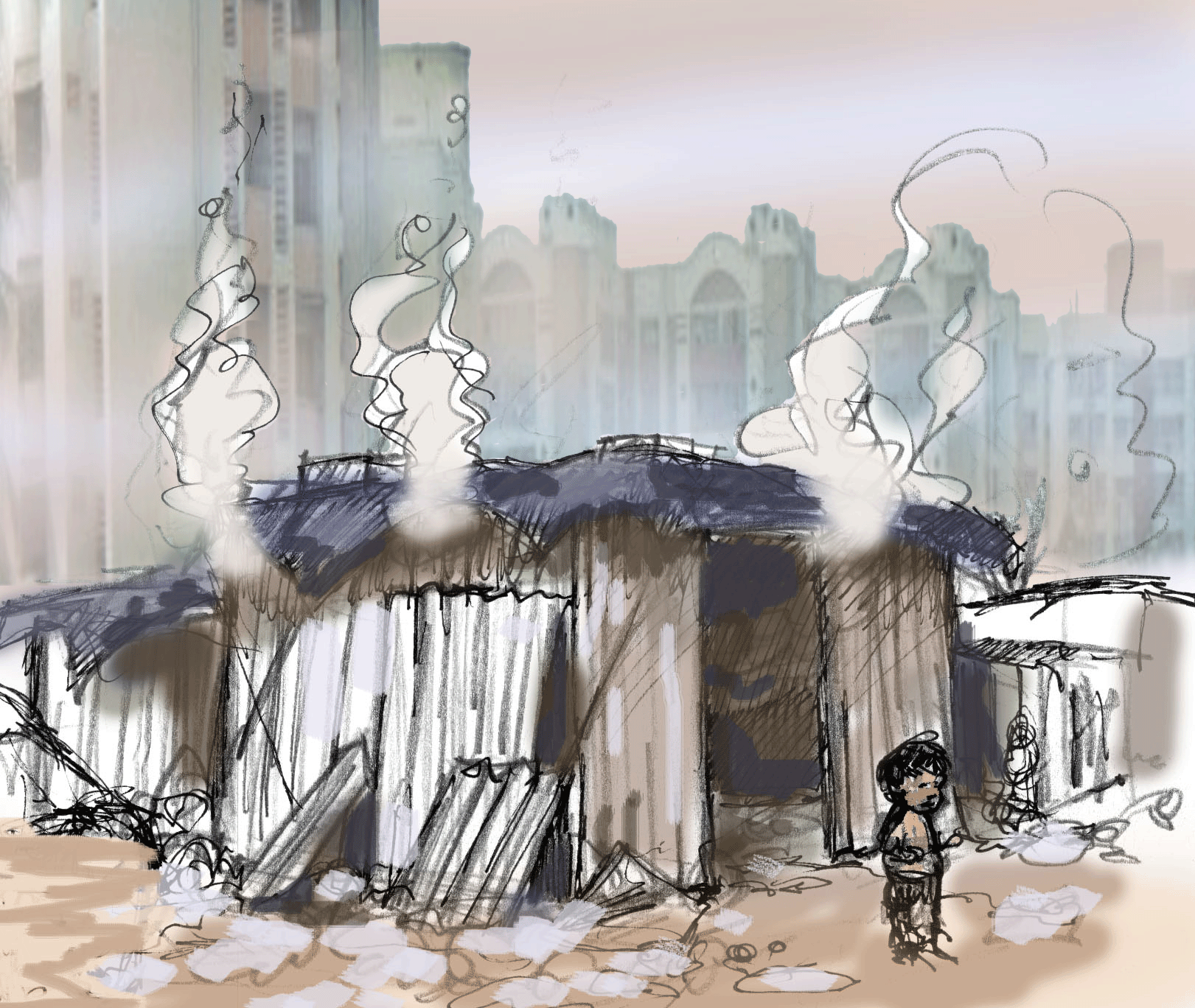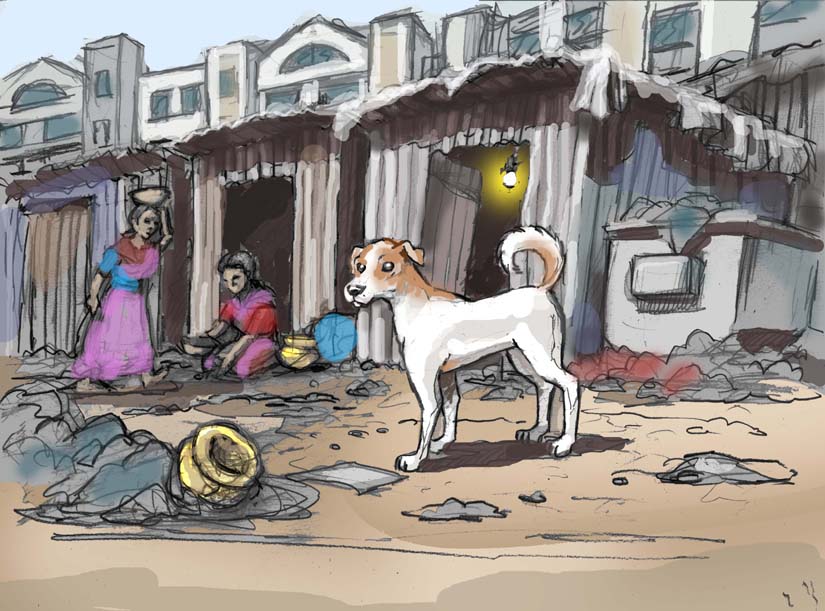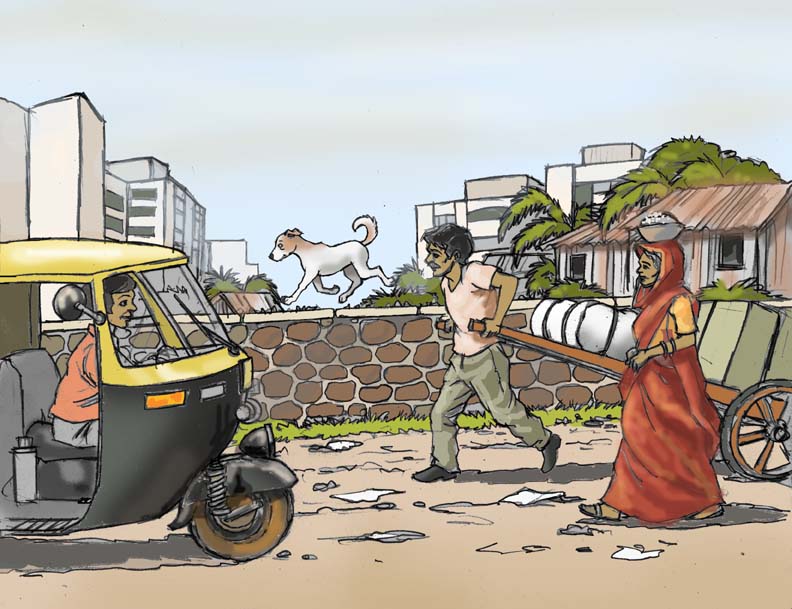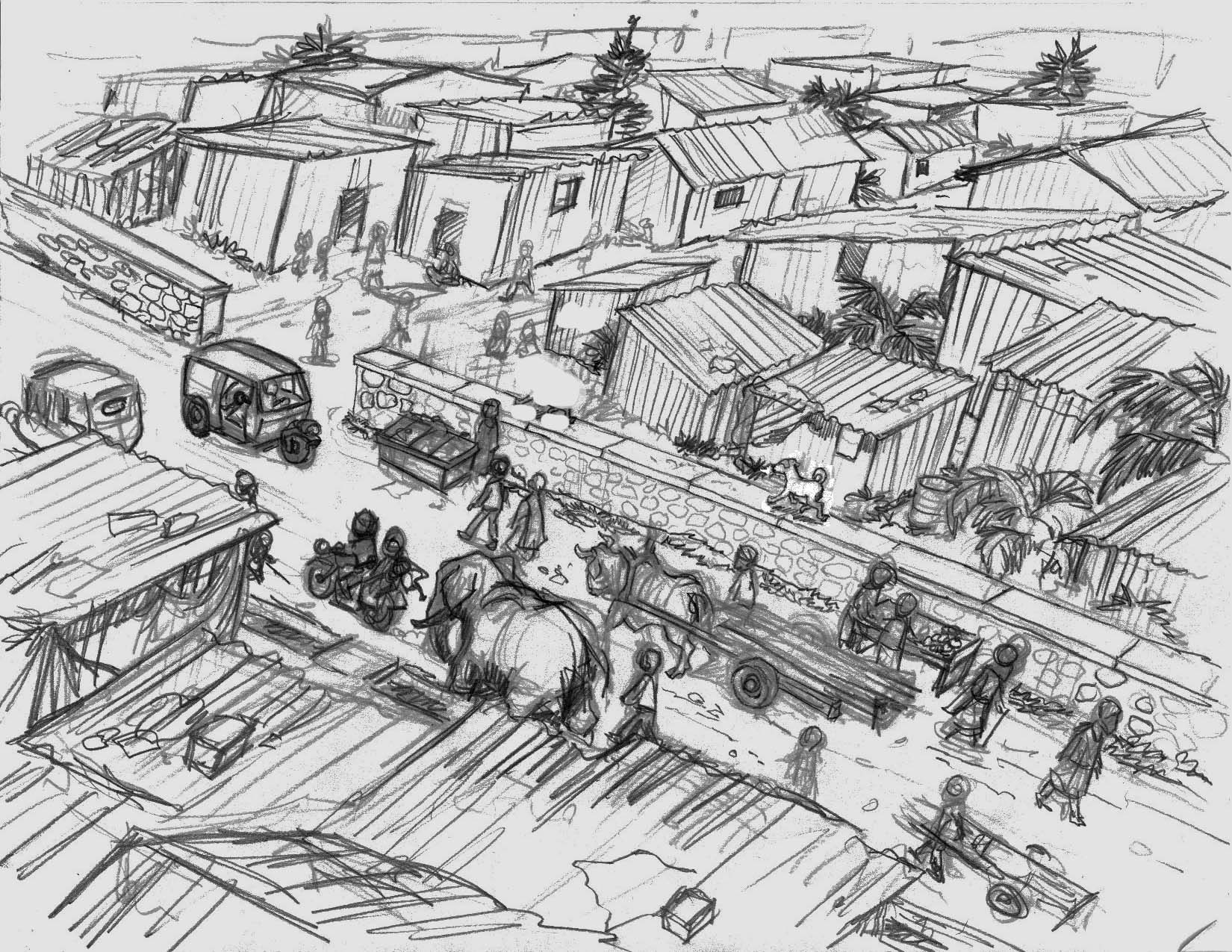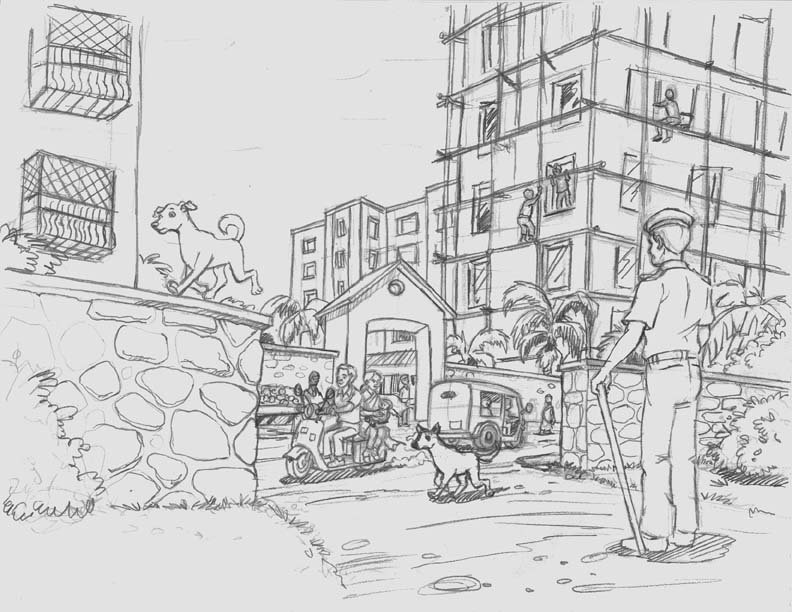I just found out about this organization called the Foundation for Sustainable Technologies that is doing exactly what I'm talking about in this website. It is run by a man in Nepal named Sanu Kaji Shrestha. They are helping people to be energy independent by by using biomass fuels rather than liquid natual gas that is becoming unaffordable for the poor. They are taking paper and cardboard from garbage, shredding it and pressing it into briquettes for fuel. They are also promoting the use of efficient stoves, some of which are downdraft gasifiers for smoke free cooking. They also work with solar technology.
They are in this year's World Challenge.
Here is their web address.
Foundation for Sustainable Technologies
Construction worker's slum
with the luxury condos the workers built in background
Bombay, India
Pyrolysis/Gasification Zone
An Inverted Downdraft Gasifier
Gasification follows the same principles outlined in page one. Wood is partialy burned in a low oxygen environment producing carbon monoxide, hydrogen and tars. This gas is then drawn away from the fire where it can be burned in a high oxygen environment as shown here in the gasifier's secondary combustion chamber or it can be piped away and used as a fuel elswhere. In this example the fire is started at the top and burns downwards. The gases and heat that are produced are drawn downward through the fuel by a fan.
Gasification technology isn't new. Syngas has been used in one form or other for centuries. Before it was replaced by electic light, syngas or "town gas" fueled lamps in houses and streets. Town gas was common in Britain until the 80s when it was replaced with natural gas. Syngas has been used in steel production since the eighteenth century and is still used today. During World War 2 when gasoline was scarce, some cars and trucks had wood burning gasifiers and their engines ran on wood gas. Before and during the war, Germany relied heavily on gasification for its energy. Much of its fuel oil came from liquified coal gas using the Fischer-Tropsch process.
One of the best uses I can see for gasification is providing cheap energy for the poor. As the Foundation for Sustainable Technologies has shown poor people can make cheap fuel for themselves and others with the waste material that they find around them.
A super turbo rice husk quasi gasifier stove was a recently discovered technology for burning rice husks with the use of a super heated steam jet.


